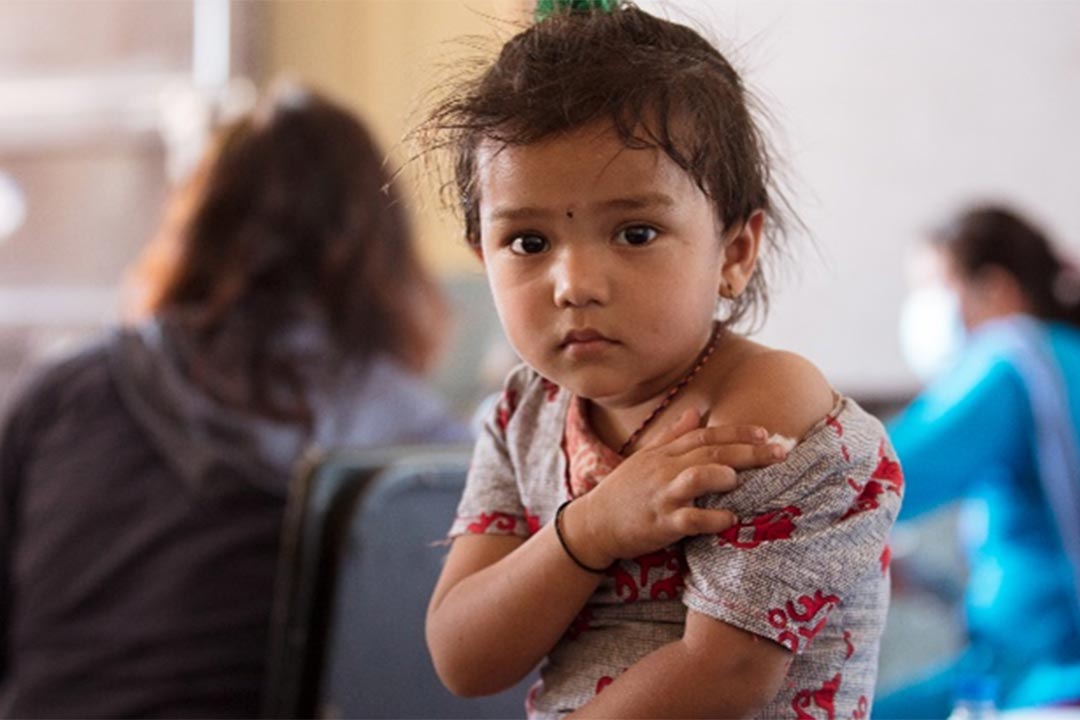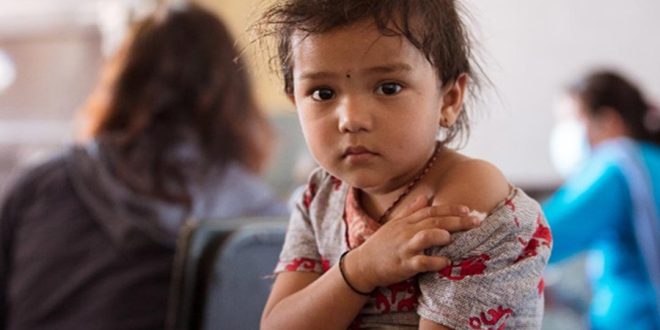Words by Sanjaya Mani Dixit

Nepal’s nationwide Typhoid Conjugate Vaccine campaign achieved an exceptional national coverage of 99.7%, marking a significant step forward in controlling typhoid in the country.
In Nepal, typhoid cases predominantly affect children under the age of 15, and our country has been grappling with drug-resistant strains of the disease due to the misuse of antibiotics and inadequate infection control measures. Recognizing the severity of the situation, Nepal initiated a nationwide campaign in April 2022 to introduce typhoid conjugate vaccines (TCV). This campaign proved successful, vaccinating over 7 million children aged 15 months to 14 years, and presented an opportunity to address broader vaccination gaps.
The campaign not only targeted typhoid prevention but provided an opportunity to identify and reach zero-dose (ZD) and under-immunized children, an issue exacerbated during the COVID pandemic, where the proportion of unimmunized children in Nepal rose from 1% to an estimated 4%. The TCV campaign became a crucial strategy in locating vulnerable children. The primary focus was therefore on reaching zero-dose (ZD) and under-immunized children who had missed routine vaccinations. Zero-dose children, defined as those below 2 years old lacking the first dose of the diphtheria-tetanus-pertussis containing vaccine (DTP1), were a particular target. Under-immunized children were identified as those missing the third dose of DTP.
Nepal’s robust immunization system, with 90% of children receiving the final dose of the basic DTP vaccine, meant that unimmunized children were found in scattered numbers. One of the crucial steps in reaching these vulnerable populations was the identification of their locations. Typically, zero-dose children reside in urban slums and remote areas where challenges like limited access to safe water and sanitation, poor hygiene, and constrained healthcare systems contribute to the spread of typhoid. Health care workers were trained to recognize zero-dose children, and vaccination cards became a valuable tool for tracking and addressing missed immunizations. They utilized specially designed TCV vaccination cards, featuring a detachable counterfoil to record vaccination history gaps, aiding in identifying children with no doses or missed vaccinations.

To complement these efforts, a door-to-door rapid convenience monitoring approach was employed to identify unvaccinated children and enhance vaccination coverage. A new app-based system developed by WHO, deployed during door-to-door monitoring, proved instrumental. About 46,000 children in 75 districts were monitored using the app, and 230 independent monitors tracked the progress, enhancing the efficiency of the campaign. This strategy allowed for a more comprehensive reach into communities and increased the chances of identifying zero-dose children.
The campaign not only addressed vaccination gaps but also raised awareness about routine immunization. It became evident that, due to the lack of access to water, sanitation, and hygiene (WASH) in areas where zero-dose children often reside, improving WASH infrastructure is crucial alongside routine immunizations to ensure comprehensive protection against typhoid. The TCV campaign, mainly executed in schools, achieved an exceptional national coverage of 99.7%, with over 95% coverage in all seven provinces. The success of the campaign was a significant step forward in controlling typhoid in Nepal. However, stakeholders acknowledge that further awareness about clean water, sanitation, and health issues is essential, particularly in remote villages, as the link between sanitation and water quality significantly impacts typhoid prevention. The TCV campaign, while a major achievement, is recognized as part of a broader effort to address typhoid comprehensively in Nepal.
This successful initiative in Nepal serves as a model for others, offering insights into effective strategies for reaching zero-dose and under-immunized children. The lessons learned from this campaign are documented by Gavi’s Zero-Dose Learning Hub (ZDLH), which aims to share knowledge globally, facilitate evidence generation, and reduce the number of zero-dose and under-immunized children.
PS: The aArticle was developed based on the publications by GAVIAVIavi, you can see more Nepal vaccine st. . You can see more of Gavi’s work, as covered in VaccinesWork, in Nepal here: https://www.gavi.org/vaccineswork/search?filter=nepal
References:
- How a major typhoid vaccine campaign helped Nepal find missed-out “zero-dose” kids [https://www.gavi.org/vaccineswork/how-major-typhoid-vaccine-campaign-helped-nepal-find-missed-out-zero-dose-kids]
- Nepal’s typhoid conjugate vaccine campaign: a catalyst to reach zero-dose children
[https://www.gavi.org/vaccineswork/nepals-typhoid-conjugate-vaccine-campaign-catalyst-reach-zero-dose-children]
 Medicosnext
Medicosnext




